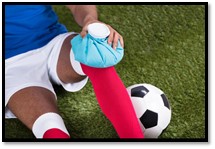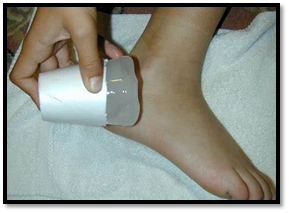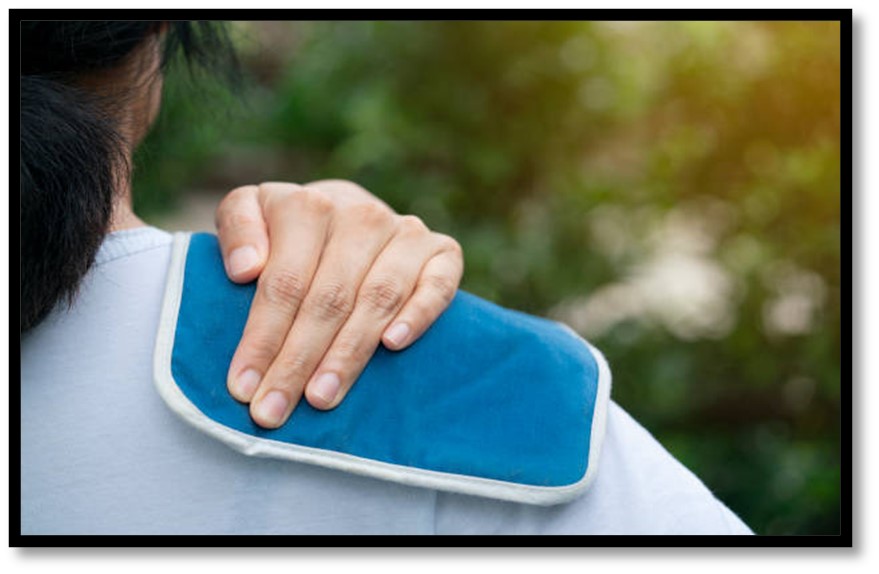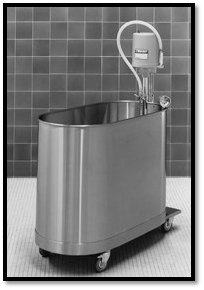12/05/2022
Ice vs. Heat
By Nick Woodard, DPT, ATC, Physical Therapist, Wentworth Douglass Rehabilitation Services at Marsh Brook
“Ouch! That hurt.” We’ve all had instances in our lives when we have been hurt one way or another. Whether it be something as small as a paper cut or something more serious like a fractured bone, injuries happen. There is always going to be some level of pain and inflammation associated with an injury. Pain is the way our body lets us know that there is an injury and that our body is trying to recover. Inflammation is our body's natural healing process. Without it, we would never recover from our injuries. While both pain and inflammation are necessary aspects of the healing process, they can become overbearing at times. Typically, the more significant an injury is the more pain and inflammation there will be associated with an injury. There are many options out there for pain and inflammation management with two of the most frequently used modalities being ice (also known as cryotherapy) and heat (also known as thermotherapy). The best choice of modality for your injury will come down the type of injury you have and how long the injury has been present.

Ice:
For acute traumatic injuries such as a joint sprain or muscle strain (pull), ice is the first line of defense for getting the acute pain, inflammation, and swelling under control.
Ice packs work by:
- Decreasing pain through decreasing nerve conduction velocity
- Minimizing swelling through vasoconstriction
- Decreasing muscle spasms
- Decreasing cellular metabolism
There are many forms of cryotherapy (icing) outside of ice packs. Alternative forms of cryotherapy include ice cup massages, ice baths, cold compression machines, and vapocoolant sprays. When applying cryotherapy in the form of an ice pack, you’ll want to apply 1-2 towel layers between the ice pack and the skin. An ice pack should be applied for 15-20 minutes to achieve the desirable effects.
Reasons to avoid cryotherapy (ice) include:
- Impaired circulation (Raynaud’s disease)
- Cold induced hives (urticaria)
- Decreased sensation to touch/pain on the area of application
- Hypersensitivity to cold
- High blood pressure and/or peripheral vascular disease
Heat:
 For chronic muscular pain or pain related to chronic osteoarthritis, heat can often be more beneficial for its ability to relieve muscle tension and calm the nervous system.
For chronic muscular pain or pain related to chronic osteoarthritis, heat can often be more beneficial for its ability to relieve muscle tension and calm the nervous system.
Hot Packs work by:
- Increasing blood flow to injured tissues through vasodilation
- Increasing extensibility of connective tissues
- Relaxing muscle spasms
- Increasing cellular metabolism

There are also many forms of thermotherapy (heating) which include warm whirlpool baths, fluidotherapy, laser therapy, paraffin baths, continuous ultrasound, and physical activity. When applying thermotherapy in the form of a hot pack, it is important to read the instructions of the hot pack to avoid potential complications including burns. Hot packs typically require 6-8 layers of toweling between the hot pack and skin. It is important to check the skin under the hot pack 5 minutes after initial application to monitor for excessive redness, blistering, and signs of redness.
Reasons to avoid thermotherapy (heat) include:
- Acute traumatic injuries (joint sprain, muscle strain, bone fracture)
- Acute inflammation (within 6 days of an acute injury)
- Decreased sensation to touch/pain on the area of application
While both Ice and heat can be useful for managing pain and inflammation, in general, ice is better for acute/traumatic injuries and heat is better for chronic pain. If you have questions regarding the use of ice/heat for your specific injury, your Athletic Trainer will be able to guide you on which modality will work best for you.
 About Nick Woodard, DPT, ATC
About Nick Woodard, DPT, ATC
Nick Woodard is a licensed Physical Therapist practicing at Wentworth Douglass Rehabilitation Services at Marsh Brook. He received his bachelor’s degree in Athletic Training and his doctorate degree in Physical Therapy both from the University of New England. He has a passion for working with athletes, treating both acute and chronic sports related injuries, to help athletes return to their chosen sport. Outside of work, Nick enjoys spending time with his family and living an active lifestyle. He can be found snowboarding on the slopes of Sunday River in the winter and golfing at local courses in the summer.